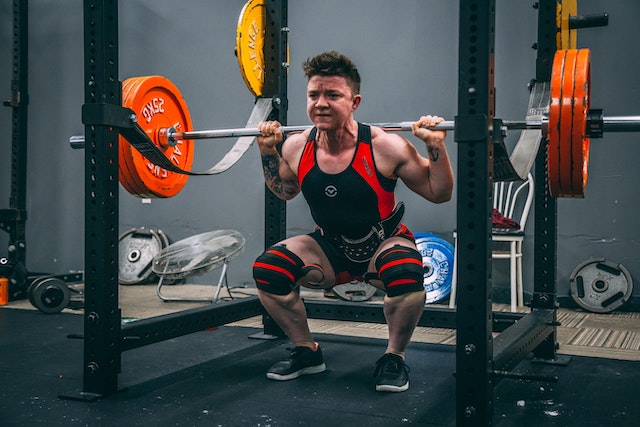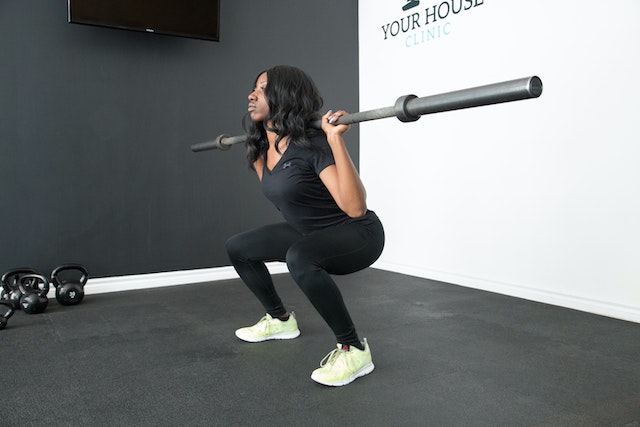Barbell Vs Goblet Squats: Goblet squats and barbell squats are two movements that every lifter needs to have in their arsenal. Both squats target and strengthens almost the same areas of the body and provide sufficient benefits. But most people get confused over which squat to prefer for better strength building. Be it a beginner or a regular trainee, these confusions always make us question our strength and ability.
So which one is better?
Barbell Squats is better. The barbell squat (back and front) is the key to foundational strength. Barbell squats should be at the forefront of your training if pure strength is a goal.
Target areas and Range of Motion:
The goblet squat works all the major muscle groups of the lower body, including the quadriceps, glutes, hamstrings, and calves.
A barbell squat, also known as a barbell back squat, is a compound exercise that activates muscle groups throughout your lower body, including your hamstrings, glutes, and lower back muscles.
The goblet squat exercise trains the all-same muscle groups as the more traditional barbell back squat. However, It places slightly more emphasis on the quads because you are holding the weight to the front of the body. The Goblet Squat promotes a more upright squatting pattern allowing you to travel deeper into the bottom squat position. Often referred to as “the hole”. Thus, providing greater range of motion for legs.
For beginners:

For beginners and movement prep series, the goblet squat is one of the best ways to pattern a strong squat. Movements like counterbalance goblet squats and paused goblet squats provide us with great benefits that transition well to complex movements like barbell squats.
Light and unloaded barbell squats can also be used as soon as possible to develop lifters the fastest way possible, however loading should be kept low-manageable, never sacrificing form and technique.
Besides, for barbell squats a person need to have a great wrist and shoulder mobility and muscular strength that’s most of the beginners usually lack. So it’s better to start your squat journey with goblet squats.
Muscle growth:

Muscles grow primarily from increased training volume, time under tension, and loading. For weaker athletes or beginners, heavy goblet squats may be a good option to increase systemic muscle growth, however it cannot produce enough muscle mass and strength for most lifters, therefore the barbell squat (and its variations) likely reigns supreme in this category. Yes, the goblet squat could be helpful for movement prep, warming up etc. However, it will not be the best movement most often for lifters looking to gain muscle in the legs and total body.
Strength development:

For developing maximal strength, you need maximum loading to prepare your mind muscles and neurological system. The barbell squats are simply the best option. If you have achieved the milestones of sufficient muscle strength and wrist mobility you can definitely push yourself towards adding further loads. The barbell squat is a foundational strength movement that can never be substituted if pure strength is the goal.
While the goblet squat being good for beginners has lesser load variation options than the barbells.
Injuries with squats:
Mostly the wrist and shoulder injuries are associated with barbell squats.
But with that said, it is important to point out that barbell squats are not the cause of your injuries or lack of recovery, rather your poor squat technique, mobility limitations, and programming.
If you are injured with a barbell squat (Lower back, wrist, shoulder, hips, and knee injuries) you should strictly abstain from them until you are fully recovered. In the mean, if you’re too desperate to make out your faulty squat techniques and weak mobilities, practicing with goblet squats can be your best option.
Calorie crush:
A team of Portuguese scientists compared the calorie-burning effects of a variety of exercises.
A low intensity barbell squat burns almost 35 calories per minute while a low intensity goblet squat crushes 58 calories in 15 minutes.
Professional training:

The barbell squat (back and front) is one of the most foundational strength and performance lift. While goblet squats may be used as a warm up movement, they do not grant for the variation and amount of loading and barbell specific movements that the sport requires. Lifters can go through their lifting career without goblet squatting, but to go without barbell squats would result in not having a lifting career to start with. You need to barbell squat.
Goblet squat :

- Less effective for strength building than barbell as you can lift heavier weights with a barbell.
- Greater range of mobility
- Better for warm ups
- Train around injuries
| Advantages | Disadvantages |
| Minimum risk of injury | Lags at professional training |
| Better warm ups | Lesser muscle growth than barbell squats |
| Perfects your squat mobility and technique | Do not budget for maximal amount of loading as in barbell squats |
| Perfect for progressing beginners | Lesser strength development as barbell squats |
| Train around injuries | You will be limited in the total load you use |
| Maximum range of motion for legs | Burns lesser calories than a barbell squat |
Barbell squats :

- Better for strength building as you can lift heavier weights with a barbell than a goblet which leads to more strength building and training.
- According to research it is people lifted 20% more weights with a barbell than a goblet
- Not much suitable for beginners and people with mobility issues.
| Disadvantages | Advantages |
| Not much convenient for beginners | Grant for maximal loading |
| Greater risk of injury | Greater strength building |
| Suitable for perfectly trained lifters with ideal musculature and mobility | Maximum muscle growth |
| Controlled range of motion for the legs | Foundational power lift |
| Burns maximal calories |
Must Read: Dumbbell vs Barbell: Chest Press For Building Mass
Variation in performance:
Goblet squat variations:
Type 1: Holding the kettle while cupping it in your hands and squatting all the down squeezing your booty and targeting quads.
Type 2: holding the kettle by the edge of the handles while the globe on top through the middle.
Type 3: rack position with free arm to the side and feet open.
Type 4: you can also do a goblet squat with heels over a block support that mainly targets the thighs.
Barbell variations:
With barbells you can try numerous variations than through a goblet.
Type 1: Barbell resting at the crook of your elbows.
Type 2: Barbell bar over your head with straight elbows.
Type 3: Barbell split squat
Type 4: Barbell hack squat
Type 5: Barbell sumo squat
Type 6: Front and back barbell squat
Posture:
It helps strengthen the muscles, prevents injury and aids fat loss from the lower body and belly. It engages and helps tone the muscles of the core, back, forearms, and to an extent, the shoulders and upper back. This makes goblet squats a total body exercise.
The goblet squat helps improve your squat form and posture If you have low back pain or spine compression issues, the goblet squat is a great front-loaded exercise that doesn’t put weight on your spine like a barbell back squat does.

While the barbell squats target your muscle groups throughout your lower body, including your hamstrings, glutes, and lower back muscles. It takes some of the weight off your knees and ankles. They help make your knees more stable, too.
Conclusion:
Both squatting movements can and should be used at some point in a training program. Barbell squats should be at the forefront of your training if pure strength is a goal; however, goblet squats are a great way to prep for squat sessions and perfect squat technique.

